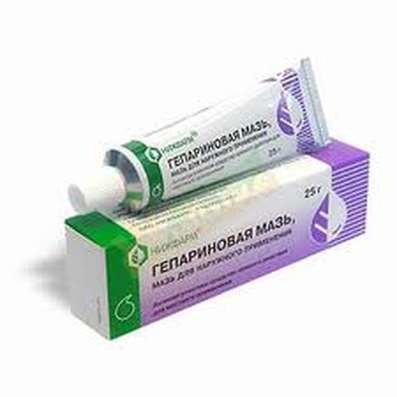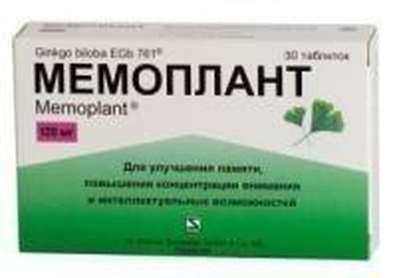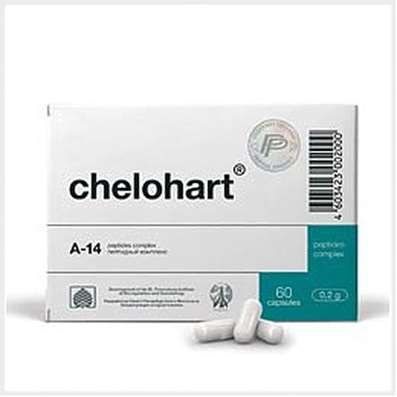Instruction for use: Citramon-LekT
I want this, give me price
Active substance Acetylsalicylic acid + Caffeine + Paracetamol
Dosage form
Pills.
Composition
1 tablet contains
Active substances:
Acetylsalicylic acid 0.24 g,
Paracetamol 0.18 g,
Caffeine anhydrous 0.0275 g
(in terms of caffeine monohydrate 0.03 g).
Excipients:
Cocoa - 0,0225 g, citric acid - 0,005 g, potato starch - 0,06 g, calcium stearate - 0,005 g, talc - 0,01 g.
Description of dosage form
Tablets of light brown color with impregnations, with a cocoa smell, round, flat-cylindrical form with a facet and a risk.
Pharmacological group
Analgesic combined (analgesic non-narcotic remedy + psychostimulant + non-steroidal anti-inflammatory drug).
pharmachologic effect
Combined drug.
Acetylsalicylic acid has antipyretic and anti-inflammatory effect, relieves pain, especially caused by the inflammatory process, and also moderately inhibits platelet aggregation and thrombosis, improves microcirculation. in the hearth of inflammation.
Caffeine increases the reflex excitability of the spinal cord, excites the respiratory and vasomotor centers, dilates the blood vessels of skeletal muscles, brain, heart, kidneys, reduces platelet aggregation; reduces; drowsiness, a sense of fatigue. In this combination, caffeine in a small dose has practically no stimulating effect on the central nervous system, but it contributes to the regulation of the tonus of the brain vessels.
Paracetamol has an analgesic antipyretic and weak anti-inflammatory effect, which is associated with its influence on the center of thermoregulation in the hypothalamus and a weak ability to inhibit the synthesis of prostaglandins (Pg) in peripheral tissues.
Indications
Pain syndrome is mild and moderate; manifestations (of different genesis): headache, migraine, toothache, neuralgia, myalgia, arthralgia, algodismenorea. Feverish syndrome: with acute respiratory infections, influenza.
Contraindications
erosive-ulcerative lesions of the gastrointestinal tract in the phase of exacerbation;
gastrointestinal hemorrhages (including in the anamnesis);
severe violations of the liver and / or kidney function;
hemorrhagic diathesis, hypocoagulation, hemophilia, hypoprothrombinemia;
surgical interventions, accompanied by heavy bleeding;
pregnancy (I and III trimester), lactation period;
deficiency of glucose-6-phosphate dehydrogenase;
glaucoma;
hypersensitivity to the components of the drug;
bronchial asthma; induced by the use of acetylsalicylic acid, salicylates and other non-steroidal anti inflammatory drugs, a complete or incomplete combination of bronchial asthma, recurrent nasal polyposis and paranasal sinuses and intolerance to ASA or-al. non-steroidal anti-inflammatory drugs (including in history);
Children's age (up to 15 years - the risk of developing Reye's syndrome in children with hyperthermia in the presence of viral diseases);
increased excitability, sleep disturbance;
organic diseases of the cardiovascular system (including acute myocardial infarction, atherosclerosis);
severe arterial hypertension;
portal hypertension;
avitaminosis K;
hypoproteinemia;
Carefully
Renal failure of mild to moderate degree, pregnancy (II trimester), hepatic insufficiency with increased activity of "liver" transaminases, benign hyperbilirubinemia (including Gilbert syndrome), alcoholic liver damage, alcoholism, epilepsy and propensity to convulsive seizures, elderly age, gout.
pregnancy and lactation
Pregnancy (I and III trimester) and the period of breastfeeding the drug is not prescribed.
Dosing and Administration
The drug should not be taken more than 5 days as an analgesic drug and more than 3 days - antipyretic (without appointment and supervision of a doctor).
Inside (during or after a meal), 1 tablet every 4 hours, with a pain syndrome - 1-2 tablets; average daily dose - 3-4 tablets, the maximum daily dose - 8 tablets. The course of treatment - no more than 3-5 days. To reduce the irritant effect, the gastrointestinal tract should be washed down with a tablet of milk or alkaline mineral water.
Side effects
Side reactions typical of acetylsalicylic acid, paracetamol and caffeine can be observed: anorexia, nausea, vomiting, Reye syndrome in children gastralgia, decreased platelet aggregation, erosive-ulcerative lesions of the gastrointestinal tract, gastrointestinal bleeding, allergic reactions, bronchospasm, multiforme exudative erythema (Stevens-Johnson syndrome), toxic epidermal necrolysis (Lyell's syndrome), renal insufficiency, liver failure, dizziness, tachycardia, increased arteries ceiling elements of pressure.
With prolonged use - dizziness; headache, visual impairment, tinnitus, decreased platelet aggregation, hypocoagulation, hemorrhagic, syndrome, (nosebleeds, bleeding gums, purpura, etc.), kidney damage with papillary necrosis; deafness, Reye's syndrome in children hyperpyrexia; metabolic acidosis, disorders of the nervous system and psyche, vomiting, impaired function, liver.
Overdose
Do not exceed the recommended dose and duration of use!
Symptoms:
with slight intoxication: nausea, vomiting, stomach pain, dizziness, ringing in the ears;
with severe intoxication: retardation, drowsiness, collapse, convulsions, difficulty breathing, anuria, bleeding.
Treatment: gastric lavage with activated charcoal, symptomatic therapy, depending on the state of metabolism - the introduction of sodium bicarbonate, sodium citrate or sodium lactate, which increases the excretion of acetylsalicylic acid due to urine alkalinization.
Interaction
Acetylsalicylic acid.
Increases the toxicity of methotrexate, decreasing its renal clearance, enhances the effects of narcotic analgesics (oxycodone, propoxyphene, codeine), oral antidiabetics, heparin, indirect anticoagulants, thrombolytic agents and platelet aggregation inhibitors, reduces the effect of uricosuric drugs (benzbromarone, sulfinpyrazone), hypotensive drugs, diuretics (spironolactone, furosemide).
Glucocorticoids, ethanol and ethanol-containing medicines increase the negative effect on the mucosa of the gastrointestinal tract and increase the clearance. Increases the concentration of digoxin, barbiturates, lithium salts in plasma. Antatsida containing magnesium and / or aluminum, slow down and worsen the absorption of acetylsalicylic acid. Myelotoxic drugs increase the manifestation of hematotoxicity of acetylsalicylic acid.
Paracetamol.
Barbiturates, rifampicin, salicylamide, antiepileptic drugs and other inducers of microsomal liver enzymes contribute to the formation of toxic metabolites of paracetamol, affecting liver function.
Metoclopramide accelerates the absorption of paracetamol.
Under the influence of paracetamol, the half-life of chloramphenicol increases five-fold. With repeated admission, paracetamol can enhance the effect of anticoagulants (coumarin derivatives).
Caffeine.
Caffeine is an adenosine antagonist (large doses of adenosine may be required). With the joint use of caffeine, and barbiturates, primidon, anticonvulsant drugs, disulfiram, ciprofloxacin, norfloxacin - a decrease in the metabolism of caffeine in the liver (slowing its elimination and increase in blood concentrations).
Caffeine-containing beverages and other medications that stimulate the central nervous system may cause excessive stimulation of the central nervous system.
Mexiletine - reduces caffeine withdrawal to 50%; nicotine - increases the rate of caffeine withdrawal.
Inhibitors of monoamine oxidase, furazolidone, procarbazine and selegiline - large doses of caffeine can cause the development of dangerous cardiac arrhythmias or a marked increase in blood pressure.
Caffeine accelerates the absorption of ergotamine. Caffeine reduces the absorption of calcium in the gastrointestinal tract.
Reduces the effect of narcotic and hypnotic drugs.
Increases the excretion of lithium drugs with urine.
Accelerates absorption and enhances the action of cardiac glycosides, increases their toxicity.
Joint use of caffeine with beta-blockers can lead to mutual suppression of therapeutic effects; with adrenergic bronchodilator drugs - to additional stimulation of the central nervous system and other additive toxic effects. Caffeine can reduce the clearance of theophylline and, possibly, other xanthines, increasing the possibility of additive pharmacodynamic and toxic effects.
special instructions
Do not prescribe the drug to children under 15 due to the high risk of developing Reye's syndrome. Reye's syndrome is manifested by prolonged vomiting, acute encephalopathy, enlargement of the liver.
Acetylsalicylic acid slows blood clotting. If the patient is to undergo surgery, a doctor should be warned in advance about taking the drug.
In patients with a predisposition to accumulation of uric acid, taking the drug may trigger a gout attack.
During the intake should refrain from drinking alcohol (increased risk of gastrointestinal bleeding and toxic damage to the liver).
Acetylsalicylic acid when used in the first trimester of pregnancy has a teratogenic effect; in the III trimester leads to inhibition of labor.
Excreted in breast milk; therefore, application during lactation is contraindicated.
With continued use of the drug, control of peripheral blood and the functional state of the liver is necessary.
Information on the possible effect of a medicinal product for medical use on the ability to drive vehicles, mechanisms
The presence of caffeine in the composition of the drug may lead to insomnia in people with increased excitability, a feeling of anxiety, so during the treatment period one should refrain from driving and performing work requiring increased attention and reaction speed.
Form of issue
Pills.
For 10 tablets in a contiguous, non-jellied package or a contiguous cell package.
1 or 2 contour squares, together with instructions for use, are placed in a pack of cardboard.
It is allowed to pack contour packs without a bundle in a group container when the instructions for use are enclosed in an amount sufficient to supply each outline package.
Storage conditions
In the dark place at a temperature of no higher than 25 ° C.
Keep out of the reach of children.
Shelf life
4 years.
Do not use after expiry date.
Conditions of leave from pharmacies
Without a doctor's prescription.

 Cart
Cart





